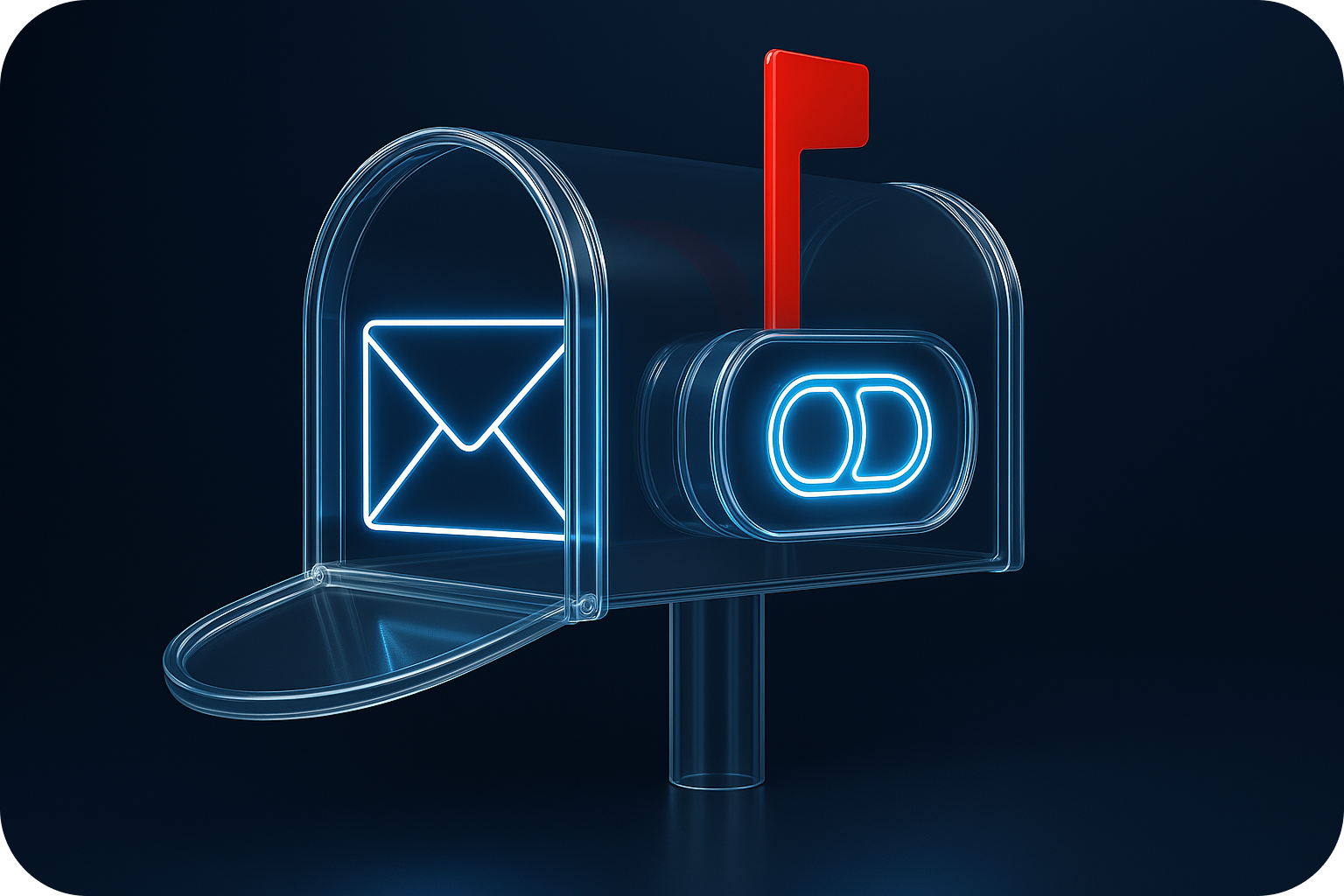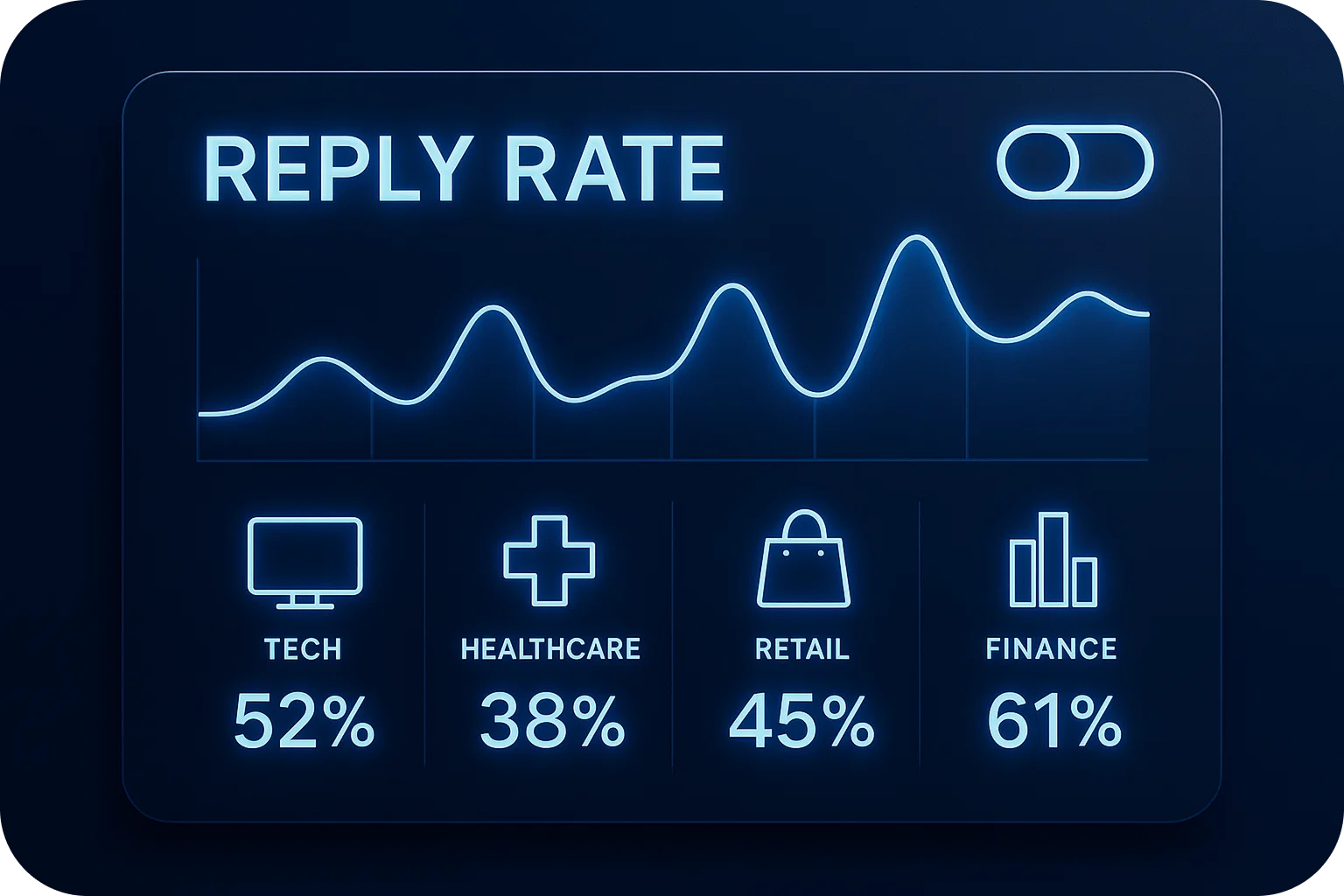Cold Emailing in 2025: 18 Sending Best Practices to Beat Spam Filters and Reach the Inbox

The rules of cold emailing are changing fast.
If you're still sending cold emails the same way you were just a few months ago, you're likely seeing a significant drop in performance. That's because the landscape has shifted dramatically. Cold email tools have become extremely accessible, and with AI, anyone can now generate personalized outreach at scale with minimal effort. As a result, inboxes are flooded and spam filters have become far more sensitive and selective.
To succeed in 2025, it's no longer enough to simply send more emails. You have to send better ones. Below are 18 essential best practices that will help you protect your domain, increase your chances of landing in the primary inbox, and generate real replies.
1. Send Low Volume per Inbox
Limit sending to 20 emails per day per inbox (after proper ramp-up).
One of the fastest ways to get flagged by spam filters is to send too many emails from a single inbox. High sending volumes from new or untrusted inboxes are a red flag for email providers. The solution is simple: scale horizontally, not vertically. Start slow, sending just a few emails per day, and gradually increase over a period of weeks. This approach builds trust and avoids sudden behavioral spikes.
Example: If you want to send 200 emails per day, use at least 10 inboxes sending 20 emails each.
Pro tip: Use a sending tool that allows you to throttle volume and automate the ramp-up process.
2. Use Separate Domains and Limit Inboxes per Domain
Never send cold emails from your main business domain. Use no more than three inboxes per sending domain.
Your core domain is tied to your website, your customer support, and your transactional emails. It is your brand's lifeline. Using it for cold outreach is too risky. Instead, register similar domains for outbound campaigns. But even these secondary domains need to be protected. Do not overload them with too many inboxes, or you risk getting the entire domain blacklisted.
Example: Use getyourbrand.com or tryyourbrand.io as your cold email domain instead of yourbrand.com.
Pro tip: Stick to domains that are short, clean, and easy to recognize. Avoid unusual TLDs that may appear suspicious.
3. Warm Up Your Inboxes and Domains
Start with at least 3 weeks of email warmup before launching your campaign.
New inboxes and domains don’t yet have a reputation with email providers. Sending cold emails from them immediately is a common mistake that leads to spam classification or even blocking. Warming up means gradually building sending volume while interacting with trusted inboxes. This simulates natural email behavior and establishes your inbox as legitimate.
Example: Begin with 2–5 emails per day, gradually increasing by 3–5 each week until reaching your target volume.
Pro tip: Use automated warmup tools that can send, receive, and reply to messages to speed up reputation building.
3bis. Keep the Warmup Active
Continue warmup throughout the life of the inbox, not just at the start.
Reputation is not a one-time achievement. It is ongoing. If your inbox activity becomes sporadic or inconsistent, email providers may deprioritize your messages. Even once you're actively sending, a portion of your daily email volume should remain dedicated to ongoing warmup to maintain engagement signals.
Example: Dedicate 10 to 20 percent of daily emails to warmup or engagement maintenance.
Pro tip: Schedule warmup activity during off-peak hours to avoid interfering with your outreach schedule.
4. Target Your Campaigns Carefully
Unfocused targeting leads to higher spam complaints and lower engagement.
Broad, unsegmented campaigns might seem efficient, but they often produce negative outcomes. When recipients receive irrelevant messages, they are more likely to ignore, delete, or report them. This signals to spam filters that your emails are unwanted. Instead, build targeted lists based on job role, industry, geography, or buyer intent to improve both engagement and deliverability.
Example: Create different campaigns for SaaS startup founders, e-commerce managers, and agency owners. Each with messaging tailored to their pain points.
Pro tip: Use lead enrichment tools to gather detailed information that helps you segment and personalize effectively.
5. Don't Track Open Rates
Tracking pixels are increasingly flagged by spam filters and affect deliverability.
Most open tracking relies on invisible images embedded in emails. Today’s spam filters are highly sensitive to this technique and may classify your email as promotional or spam simply for including it. While it can be tempting to measure opens, they are no longer a reliable or safe metric for cold outreach. Focus on what matters: replies and positive engagement.
Example: Disable open tracking in your sending tool before launching a campaign.
Pro tip: Use A/B tests based on reply rates to evaluate subject lines and first-line performance instead.
6. Authenticate Your Domain
Proper email authentication is non-negotiable for inbox placement.
Without proper authentication protocols—SPF, DKIM, and DMARC—your emails are treated as suspicious or unauthenticated. These DNS records prove that your email is coming from a legitimate source and hasn’t been tampered with in transit. They are now required by most major email services.
Example: Configure SPF to allow your sending service, DKIM to validate your domain, and DMARC to monitor delivery.
Pro tip: Use a domain authentication checker or consult your domain registrar’s help center for setup guidance.
7. Use Spintax to Vary Your Emails
Email providers detect identical or near-identical messages. Use spintax to generate variation.
Sending the same copy to hundreds of leads is an easy way to get flagged. Spintax lets you inject natural variation by randomizing greetings, phrases, or sentence structure. The more unique your emails appear, the harder it is for filters to detect patterns.
Example: “{Hi|Hey|Hello} {John|Sarah|there}, I noticed your team at {Company|Firm|Organization}…”
Pro tip: Don’t just spin the greeting. Vary your CTAs, intros, and even sentence structure for best results.
8. Avoid Spam Trigger Words
Certain keywords are known to trigger spam filters. Steer clear.
Words like "free," "risk-free," "guaranteed," or "buy now" can doom your message before it is even read. Spam filters associate these terms with promotional or scammy content. Instead, write like you speak in a professional one-to-one context.
Example: Replace “Act now to save 30%” with “Would it be worth exploring if this can help you cut costs?”
Pro tip: Run your copy through spam-detection tools to identify and remove risky phrasing.
9. Send Plain Text Emails
HTML emails look like marketing. They perform worse in cold outreach.
Plain text emails are simpler, faster to load, and more human in tone. They are less likely to be flagged by spam filters and more likely to earn a reply. Avoid styling, embedded images, or logos that can weigh down your message or trigger warnings.
Example: “Hi Anna, saw you are growing your SDR team. Thought I would reach out with an idea.”
Pro tip: Use a lightweight signature with no images or hyperlinks in the first message.
10. Include a Clear Call to Action
Every email needs one specific and actionable CTA.
If your recipient doesn’t know what to do next, they’ll ignore or delete your message. A strong call to action makes your email actionable and boosts your reply rate. This reply, even if it's a "not interested," improves your sending reputation.
Example: “Would a quick 10-minute call this week make sense to see if this fits?”
Pro tip: Keep your CTA short, specific, and easy to say yes to. Avoid vague asks like “Let me know what you think.”
11. Set Up Unsubscribe Options
Make it easy to opt out to reduce spam complaints.
If people don’t see a clear way to opt out, they’ll hit the spam button instead. That hurts your sender reputation. You don’t need a fancy unsubscribe link, just a clear line of text inviting people to disengage.
Example: “P.S. If this isn’t a fit, just reply with ‘no thanks’ and I won’t follow up.”
Pro tip: Adding this to every follow-up email further reduces the chance of being flagged.
12. Rotate Inboxes Regularly
Use inbox rotation to manage reputation and scale safely.
Sending continuously from the same inbox day after day increases risk. Rotate between multiple inboxes to spread sending volume and reduce pressure on any single one.
Example: If you have 15 inboxes, use 10 actively and rotate in the other 5 weekly.
Pro tip: Always maintain 30 percent extra inbox capacity as a buffer to replace any inbox that gets flagged.
13. Triple Check Your Lead List
Bad leads create bounces. Bounces damage deliverability.
If you’re sending to invalid or risky email addresses, your bounce rate will climb and your inbox reputation will fall. Use email verification tools to clean your list before every campaign.
Example: Avoid sending to catch-all or unverifiable domains. These often lead to high bounce rates.
Pro tip: Run your lead list through verification tools like NeverBounce, Bouncer, or ZeroBounce before each campaign.
14. Don’t Include Links (Especially in the First Email)
Links in cold emails raise spam flags. Wait until there’s engagement.
Spam filters are suspicious of links, especially in unsolicited emails. Avoid adding calendar links, websites, or external resources in your first message.
Example: Instead of “Here’s my calendar,” say “Happy to send over my availability if this sounds interesting.”
Pro tip: Save links for the second or third email in your sequence, after the recipient has shown interest.
15. Keep Emails Short
Short emails get read. Long ones get ignored.
Your first email should be under 300 characters. The goal is to create enough interest to earn a reply—not explain everything upfront.
Example: “Hi Ben, noticed you’re hiring SDRs. I help early-stage teams ramp faster—worth a quick call?”
Pro tip: Use short sentences and keep your email to three lines max.
16. Never Send Attachments
Attachments are high-risk and unnecessary in cold emails.
Attachments can trigger filters or appear suspicious. They also slow down delivery and discourage opens. Use hosted links only when a conversation is underway.
Example: Share your case study link after the recipient replies. Not in the first email.
Pro tip: Host documents on platforms like Notion, Drive, or Loom and link them after initial engagement.
17. Monitor Spam and Bounce Rates
Track your sending health consistently to catch issues early.
If your bounce rate exceeds 3 percent or spam complaints rise, your entire domain reputation is at risk. Regular monitoring lets you spot and fix problems before they escalate.
Example: Use Google Postmaster Tools to check spam rates and domain reputation.
Pro tip: Set up alerts or dashboards inside your sending tool to track deliverability in real-time.
18. Stay Tuned. Cold Email Rules Are Evolving
Deliverability best practices change monthly. Stay informed.
Spam filters evolve rapidly as the volume of cold email increases. Tactics that worked last quarter may no longer be effective. Keep learning and adapting.
Example: Follow experts like Hugo Pochet on LinkedIn or subscribe to deliverability newsletters.
Pro tip: Bookmark industry blogs and dedicate time weekly to review updates on cold outreach and email infrastructure.
Final Thought
Cold email isn’t dead, but lazy cold email is.
Deliverability is now your biggest battleground. Following these 18 practices will help you protect your domain reputation, improve inbox placement, and drive better response rates.
If you want the infrastructure side fully handled: domains, inboxes, inbox rotation, reputation monitoring. Mailpool gives you everything you need to succeed at scale, without risking your brand.
More articles
Get started now




%201.png)





